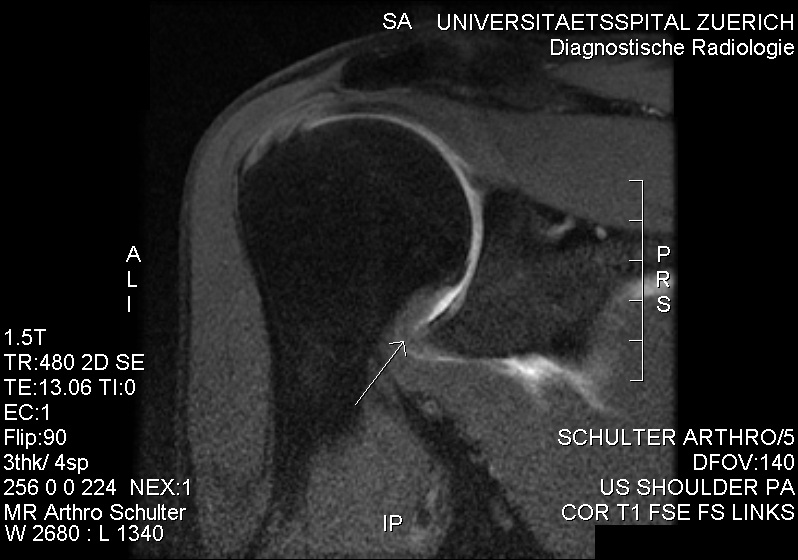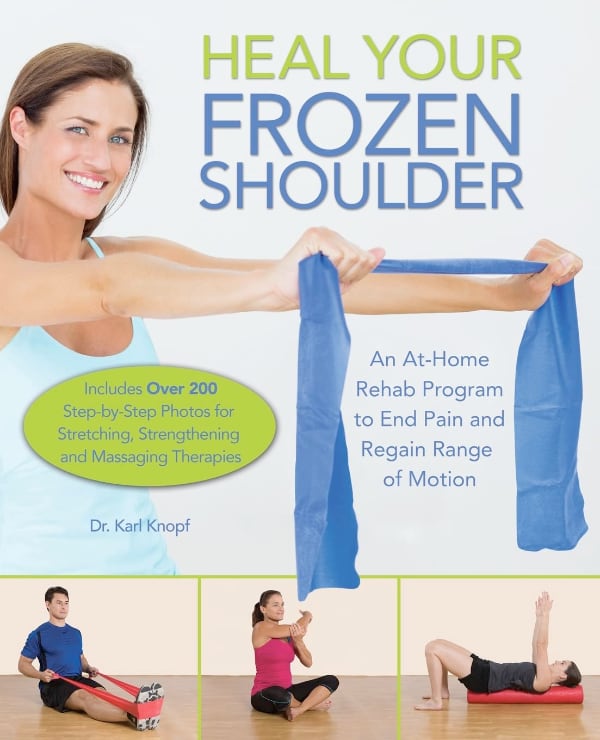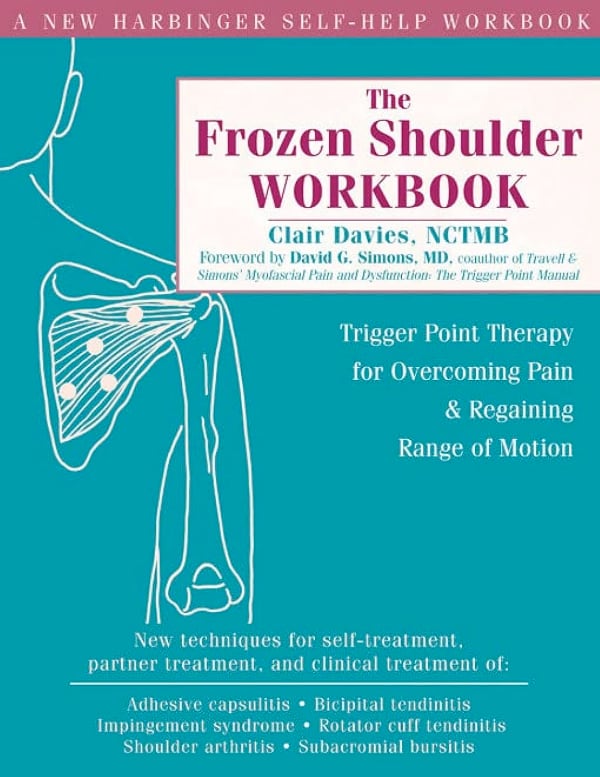In order to understand this condition, it is important to understand the anatomy and function of the shoulder. Please read Shoulder Pain Info’s section on basic shoulder anatomy. For additional background information on the biomechanics of the shoulder please read Shoulder Pain Info’s section on basic shoulder biomechanics. It may also be useful to learn more about joint capsular patterns.
What is important to know about the anatomy of the shoulder joint?
The shoulder joint (glenohumeral joint) is the most mobile joint in the body. It is a ball and socket joint that is part of the shoulder complex. The shoulder complex is made up of three bones, which are connected by muscles, ligaments, and tendons. The large bone in the upper arm is called the humerus. The shoulder blade is called the scapula and collarbone is called the clavicle. The top of the humerus is shaped like a ball. This ball sits in a socket on the end of the scapula. The ball is called the humeral head and the socket is called the glenoid fossa, hence the term glenohumeral joint.
The glenohumeral joint is surrounded by a large, loose “bag” called a capsule. The capsule has to be large and loose to allow for the many movements of this joint.

CC BY-SA 3.0 https://creativecommons.org/licenses/by-sa/3.0, via Wikimedia Commons
What is a “frozen shoulder”?
“Frozen shoulder” is the term used to describe a condition where the shoulder joint capsule becomes thickened and contracts (shrinks). When the capsule shrinks the glenohumeral joint does not move as easily and gradually more and more motion is lost until the shoulder becomes “frozen” and does not move any more.
There are varying degrees of frozen shoulder. Sometimes there is a mild restriction of motion and sometimes the shoulder is so frozen that there is very little motion of the shoulder at all.
What causes frozen shoulder?
A number of conditions can cause frozen shoulder. One of the most common causes is immobilizing the shoulder after injury or because of another painful shoulder problem such as bursitis or tendonitis. There are many conditions that have been linked to frozen shoulder. Some of these conditions are listed below:
- Rotator cuff tears
- Osteoarthritis of the shoulder joint or the acromioclavicular joint
- Diabetes
- Thyroid problems
- Heart attacks
- Fractures (broken bones) of the upper arm
- Certain cancers
What does a frozen shoulder feel like?
Frozen shoulder can be divided into three different phases or periods.
a) The painful period – This period can last anywhere from six weeks to eight months. Towards the end of this period shoulder pain usually decreases.
b) The frozen or stiff period – This period can last anywhere from six weeks to one year. There is often minimal pain during this period. The most bothersome thing in this period is the lack of shoulder range of motion. During this period shoulder range of motion does not change.
c) The recovery period – This period can last anywhere from six months to two years. During the recovery period there is a gradual increase in shoulder range of motion. Usually there is full recovery of shoulder range of motion. Unfortunately, sometimes the last degrees of range of motion do not come back.
Can a frozen shoulder be detected on X-rays?
X-rays cannot identify frozen shoulder. Special tests such as an arthrogram or an MRI can be ordered to identify frozen shoulder but they are not usually required. These tests may be used to determine tears in the rotator cuff or other shoulder problems that may have caused frozen shoulder.
What is the treatment for a frozen shoulder?
A lot can be done to help people who have frozen shoulder. Most times, treatment will begin with a conservative approach. The following conservative treatments should be tried and continued according to how much pain relief or improvement in shoulder function they produce:
- A program of stretching and strengthening exercises.
- Ice therapy.
- Anti-inflammatory or pain medications.
- Active release therapy.
- Cortisone injections.
- Acupuncture
Doctors and physical therapists who deal with people who have frozen shoulders can help outline a conservative treatment program.
If the conservative approach to managing a frozen shoulder is not effective, surgery may be required. An orthopaedic surgeon may perform arthroscopic surgery or they may move the shoulder through its full range while the patient is under an anaesthetic thus breaking up scar tissue and loosening the joint capsule.
What other information is available on frozen shoulder?
Here are some recommended sources for information on frozen shoulder:
- The Frozen Shoulder Workbook: Trigger Point Therapy for Overcoming Pain and Regaining Range of Motion
- Heal Your Frozen Shoulder: An At-Home Rehab Program to End Pain and Regain Range of Motion
A recommended books about frozen shoulder:

Heal Your Frozen Shoulder: An At-Home Rehab Program to End Pain and Regain Range of Motion
Learn how to prevent injury and quicken the healing process from frozen shoulder with this doctor-created, comprehensive at-home rehab, strengthening, and maintenance program.

The Frozen Shoulder Workbook: Trigger Point Therapy for Overcoming Pain and Regaining Range of Motion
Powerful Techniques to Relieve Shoulder Pain and Stiffness
Author Clair Davies’ own case of frozen shoulder led him to undertake an extensive study of trigger points and referred pain that eventually resulted in his best-selling Trigger Point Therapy Workbook.
